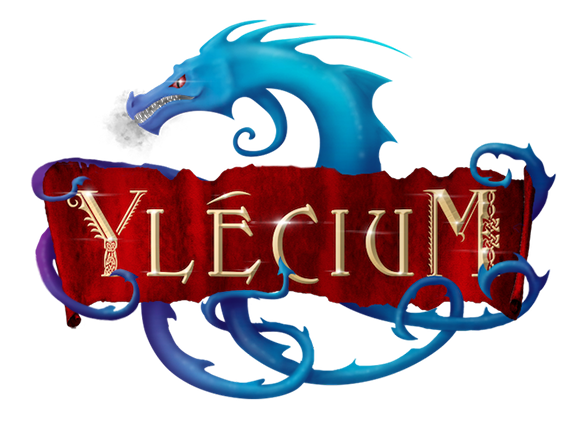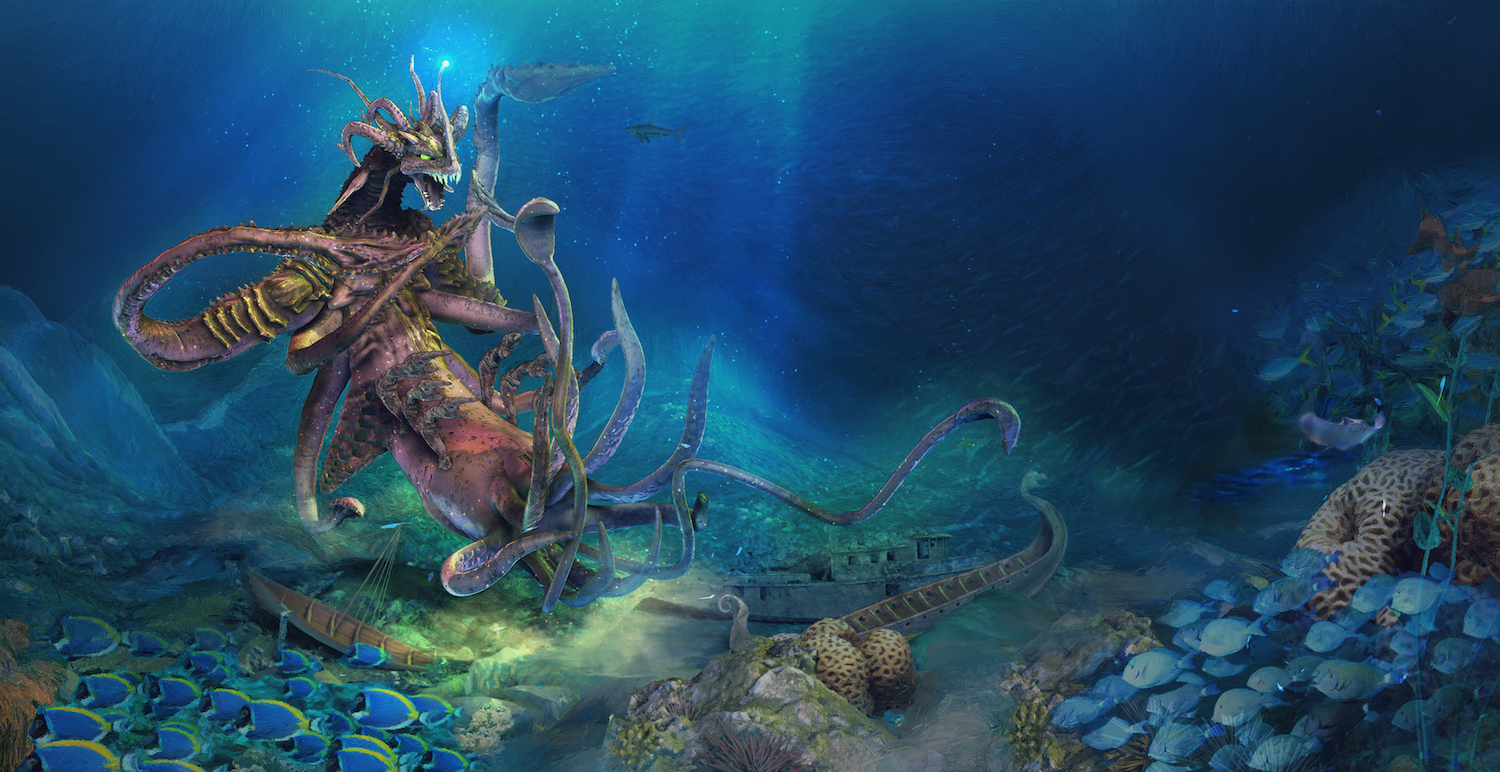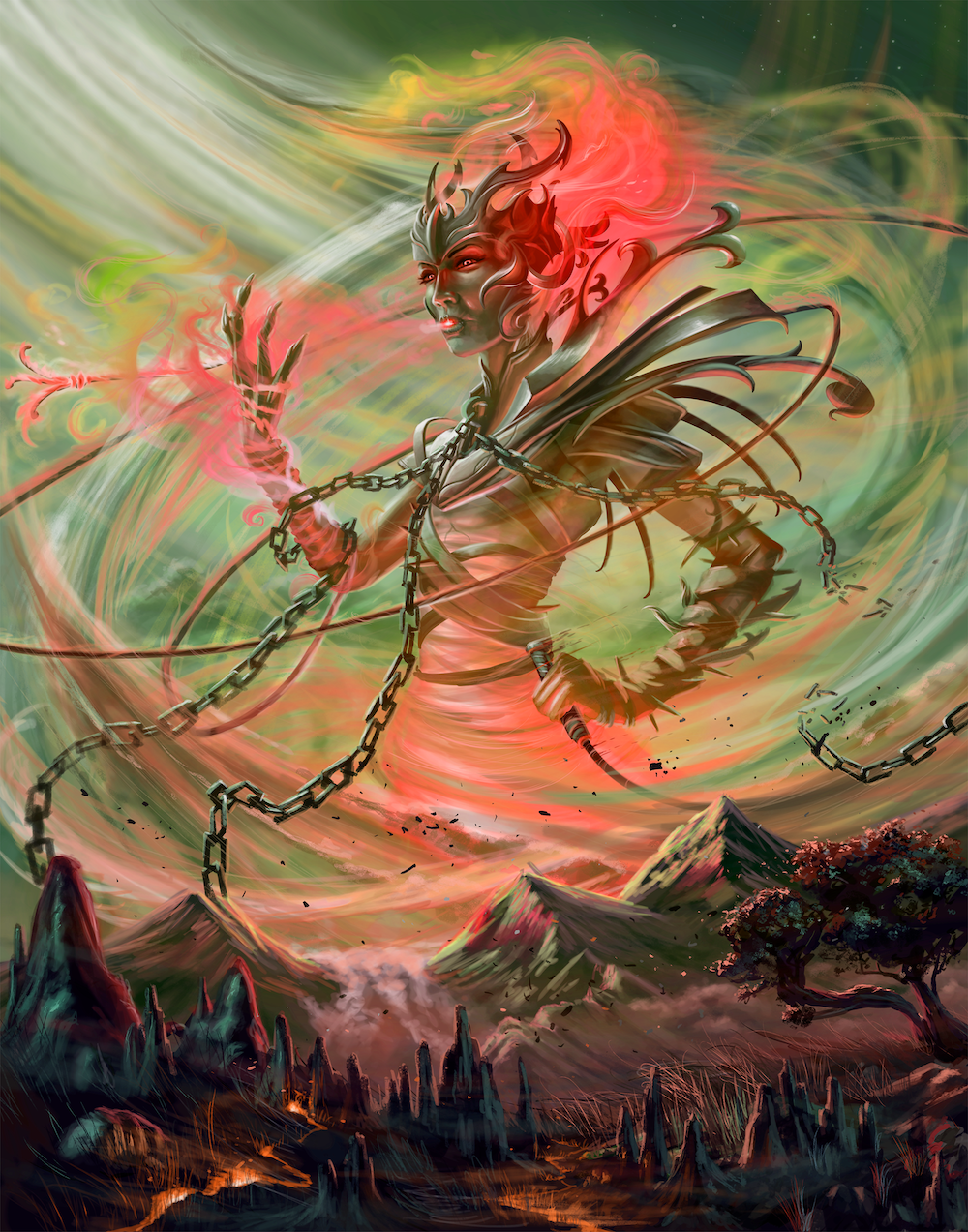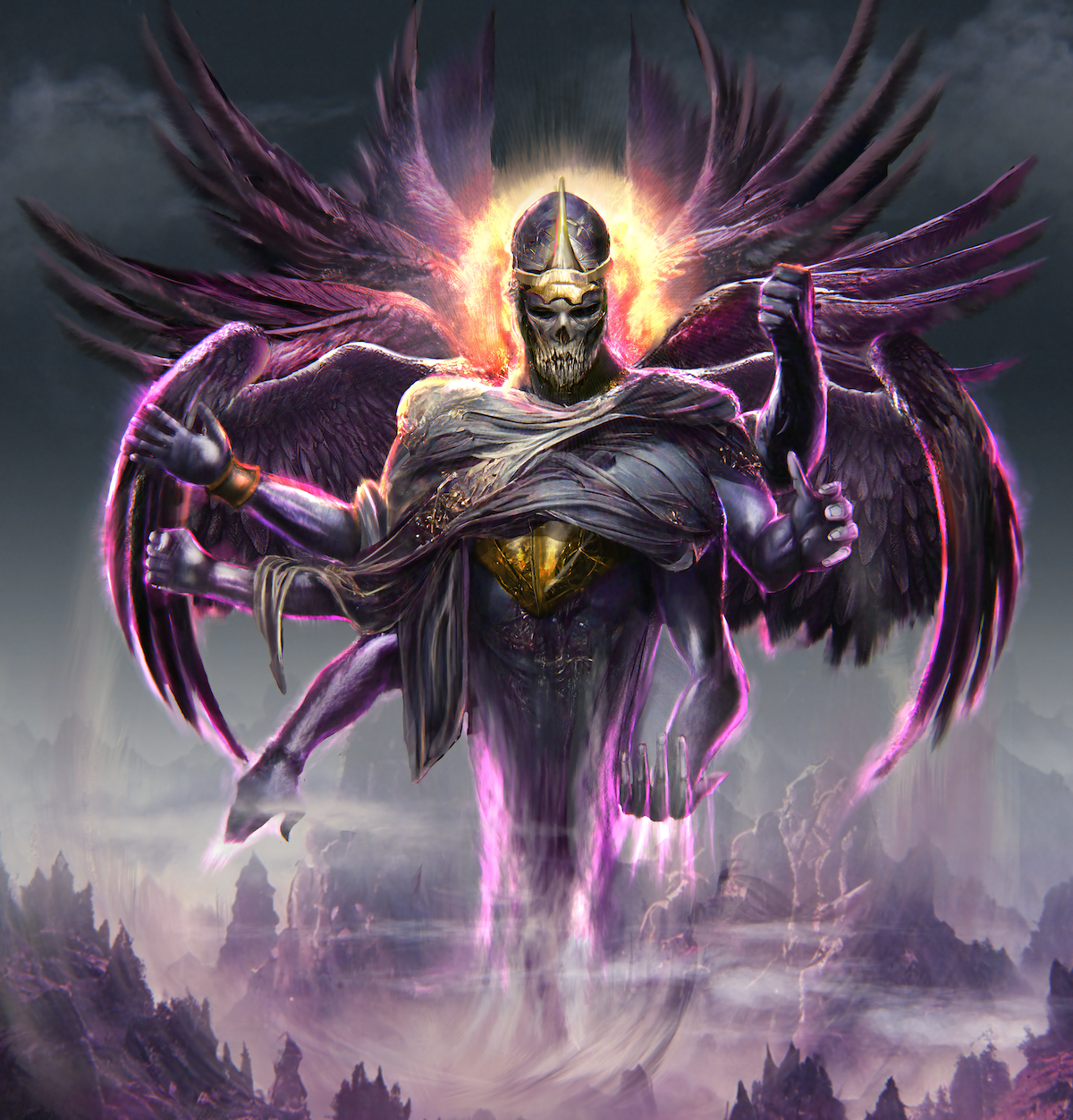Gods and Goddesses of Alpha Magenta
There are eight known gods or goddesses who interact with Alpha Magenta.
Cerena
Goddess of Fate, Honor, and Marriage
Worshipped by the White Elves, Cerena is pivotal to the elven culture. She is the embodiment of everything the elves value.
Cerena symbolizes Fate and Honor, and supports how the elves see themselves as the protectors of the world and its natural order. To a declining population, marriage and pregnancy are important aspects of life. Hence, Cerena enjoy a large following among the elves.
Eyere
God of Magic and Emotion
Eyere is said to be the first-born ancestor of the Realm Wanderers, and therefore also the most powerful one.
Governing the domain of Magic and Emotions, he is believed to consist of energy more than physical matter. The few mages who claim to have seen the god, describes him as a large sphere of purple energy with a face materializing at the center.
Primarily, it’s humans–and in particular the Order of the Unseen–who are devoted followers of Eyere. To show appreciation of their God, the mages wear an emblem of a copper spiral encircling a moonstone ring to symbolize how one needs to be in harmony with one’s emotions. This symbol is referred to as the “Circle of Balance.” While the symbol is reserved for the mages, common folk are not only expected to worship Eyere but also participate in regular local ceremonies, hosted by the Order of the Unseen, in honor of Eyere as the one true god.
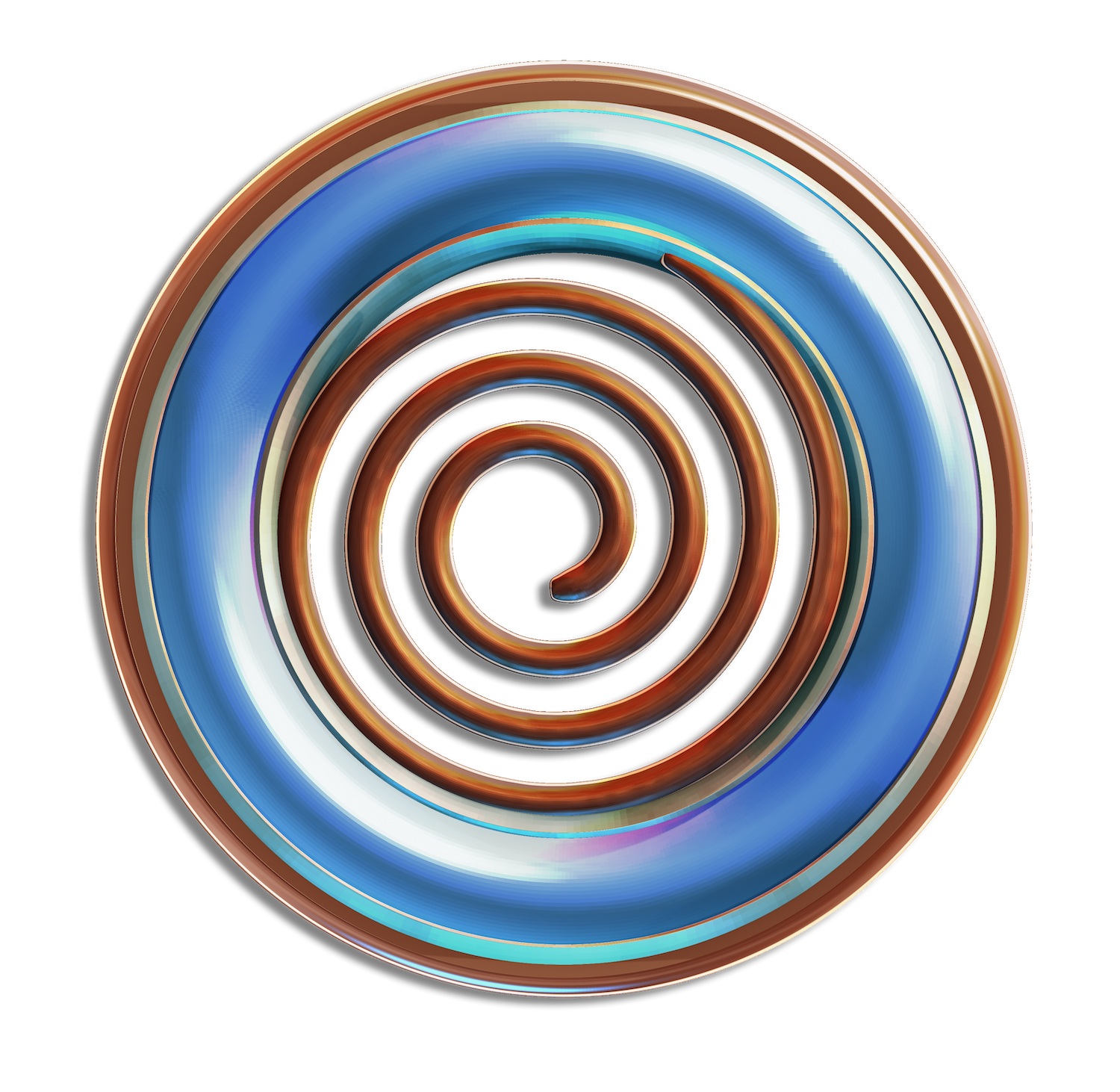
Mida
God of Vengeance and Fury
Mida is a warrior-god, and whilst he is fearless and possess combat skills so impressive that they’ll turn the tide of a war, anyone apart from the Ember Dwarves are ambivalent towards Mida.
His insatiable appetitive for vengeance and destruction makes him a dangerous deity but also one of the dwarves’ favorite gods.
Niveen
Goddess of Water
The dragon-goddess Niveen is worshipped by the White Elves. Her lower body consists of tentacles, while her upper torso and head is that of a dragon. Her symbol of a tentacled dragon is born on the shields of all elven warriors as they storm into battle.
Legends say that when the dwarves united under the first Wielder of Wrath, Oko the Despoiler, had brought the elves to near extinction, the most devoted followers pleaded for Niveen to grant the elves passage to safety. In response, Niveen froze the sea, allowing the elves to first escape to the Watch Station, situated on the island west of the Citadel of Far-Seeing, and from there on to the distant islands amidst the Sea of Ice.
As soon as the Ember Dwarves set foot on the ice, it melted away, plunging the dwarves into the depths to satiate the hunger of Niveen’s children: the underwater dragons.
Niveen gave birth to these monsters, which have terrorized the oceans of Alpha Magenta ever since.
The underwater dragons not only yearn for dwarven flesh, but will also attack larger objects; making sailing fatal. A single underwater dragon is powerful enough to wrap itself around an entire ship, pulling it below the surface of the water, where it proceeds to crush it while tearing it apart with its teeth.

For this reason, the elves make sure to give tribute to Niveen before setting foot on their vessels. However, inside the large bay known as the Sheltered Sea in the North-Eastern part of Alpha Magenta, human fishermen have no trouble going about their trade. There, the water is too shallow for Niveen’s children to pass. So they stay in the deep water where they protect their mother’s slumber at the bottom of the sea.
While it might be safe to fish inside the bay, the rest of the races of Alpha Magenta still fear Niveen. That is except for the Ember Dwarves. They, almost to a fault, deny her existence.
That doesn’t change how Niveen is a powerful deity. Her most ardent followers choose to spend a lifetime in complete devotion to the Goddess of Water. Those Elves go by the proud name: Niveen’s Chosen. Any elven teenager can declare his or her intention to become one of Niveen’s Chosen. For a year, they must sequester themselves near the shore, and listen for Niveen’s words transmitted on the tide and waves. Only when they have taken in Niveen’s wisdom, may they attempt to swim from the Citadel of Farseeing to a barely seen island.
On this tiny island, a small spring is found underneath eight open arches, representing Niveen’s tentacles. It’s there that the young elf must bathe and accept Niveen’s blessing. Although, if one isn’t chosen, or has ventured forth too soon, Niveen’s scale-covered dragon children will swim in from underground tunnels and devour the seeker.
Upon successfully returning to the mainland, the newly anointed Niveen’s Chosen is given a large white pearl to signify their status. It’s to Niveen’s Chosen that sailors and adventurers alike seek guidance and blessing before launching a sea voyage.
Even in daily life, elves perform a ritual washing–preferably with sea water–to pay daily homage to Niveen. Those who rise in elven society will often go to great lengths to appease Niveen by building amazing fountains, bathing pools, and water features—the beauty of which would stun anyone not native to elven lands.
In death, elves are granted water burials. It’s believed that the deceased will turn into water before being swept up in Niveen’s embrace. The lucky few are understood to be reborn as one of Niveen’s dragon children. Niveen’s Chosen are certain this honor is their guaranteed fate.
All White Elves share the view of how the ebb and flow of water and the fall of rain are all part of the cycle of life and death. They often use a spiraling knotwork of tentacles as a motif on anything holding water–like fountains and water pitchers–to mark the sacredness of water, as well as to represent the entwinement of life and death.
Balance is everything in elven society. Anything that is believed to tip the scale, either toward light or darkness, will call upon the members of the ancient Assassins Guild to take action.
Otano
Goddess of Torture and Wind
Otano is one of the dwarven gods and is often illustrated as a tornado the color of blood. This is also how she is said to appear. Red clouds will come together, forming a gigantic human figure. Her hair is pure flame, and in her hand she carries a flaming whip.
The dwarves believe Otano to be the chosen bride of Xoda, the God of Death, and the howling voices one can hear screeching from inside the Rift are their offspring. Occasional dark figures spotted scurrying across the stony mountain faces of the dwarven territory are claimed to be some of these demonic children, who have managed to escape the Rift with the hopes to cause strife in the world.
Because of the union between Xoda and Otano, worshippers of these two dark gods often adore both of them equally. In place of ale or wine, the dwarves are known to drink a poison that causes acute cramps. They also inflict pain on themselves by means of self-injury.
It’s all done in an effort to embrace Otano.
The Goddess of Torture and Wind has gifted the world with discomfort and agony. Each time an Ember Dwarf can summon such feelings, especially when inflicted upon others, it’s considered a tribute to Otano. Even undergoing voluntary torture before death is regarded as a way in which to honor Otano, Xoda, and their devilish marriage.
The most vehement of Otano’s followers belong to a subcult, which transverses the numerous dwarven clans. They are known as Otano’s Blade. It’s members carry a slim knife with a narrow and exceedingly sharp blade. The handle is made from a radius bone, ripped straight out of a living person’s arm. The weapon is carved and painted with a red spiral, indicative of how it’s wielded in Otano’s name. Members also have numerous piercings, often made from the bone of their victims.
There are even those among the Order of the Unseen, who secretly supports the dark goddess. Some believe that whoever frees Otano from her imprisonment by the Order will be granted godly powers as payment.
While the wisest of mages claim this nothing more than Otano’s attempt to manipulate others into freeing her, there are a selected few who believe her promises. They work in the shadows to secure Otano’s future release.
Qhumi
Goddess of Nature and Vegetation
Shotane
God of Wealth
The God of Wealth is the sole focus of those parts of the human civilization who have devoted their life to mine the dangerous aqualunite crystals in the deadly desert, the Restless Expanse.
There are those who claim that Shotane is nothing more than a Lord of Hoarders, but his followers obviously think otherwise.
Xoda
God of Death
As one would expect, the Ember Dwarves have a tale of their own to counter the might of Eyere, the God of Magic and Emotion. While all the gods are ancestors of the Realm Wanderers, it’s said that Eyere was the first-born.
However in the minds of the dwarves, Xoda, being the God of Death, is even stronger than Eyere.
According to a well-known dwarven myth, Xoda once defeated Eyere in battle, and to this day keeps him enslaved–using Eyere as a puppet for personal gain. Despite what the mages might have to say about such a claim, there is some logic to it.
The dwarves state that not only are their champions granted mutations because Xoda forces Eyere to perform magic against his will, but the imprisonment of the God of Magic and Emotions is also what makes magic increasingly unstable across Alpha Magenta. No one can say with any certainty who is right, and who is wrong, but what remains is the fact that the gods are essentially all siblings.
Having originated from the same line of heritage, the benevolent gods aim to protect each other. Whereas a dark deity like Xoda has nothing but destruction in mind.
The God of Death is often delineated as a skull with an axe between its teeth. Others draw him as a legless, floating torso that moves about by the use of twelve black feathered wings, each spanning ten feet. His six arms are surrounded by purple energy, breaking through the fog of darkness that surrounds him at all times.
There are none across the face of Alpha Magenta who denies Xoda as a real deity–which grants him enormous powers. He might be one of the most feared gods in existence, yet, the White Elves still regards Xoda as being of lesser worth. That’s despite the fact that even their long-lived race isn’t immune to the reach of the God of Death.
The elves say that Xoda’s minions sacrifice their soul, and therefore their place in eternity, to their god upon their demise. This makes the elves despise Xoda, and all he stands for. However, there are rumors of human warriors who have become incredibly powerful, not to mention ruthless leaders, after having secretly worshipped Xoda.
In common tongue, Xoda’s worshippers are referred to as, Deathbringers. The most fanatical of whom fights with the utmost of intensity. In readying themselves for combat, their enthusiasm to bring new souls to their God, moves them to the point of ecstasy. They fight longer than any other dwarf. A blissful rage consumes them to an extent that they’ll slaughter anyone who comes within their reach; including their own allies. Killing scores of enemies, before dying from exhaustion is considered the greatest of honor to a Deathbringer.
Dwarven society is splintered into separate clans, with each one having their own unique way of worshipping Xoda. Some wear black clothing. Some paint themselves black. Some wield only black weapons. Universally though, all have at least one tattoo of a skull with an axe between its teeth to demonstrate their devotion.
The greatest clan chiefs, those who wish to become the next Wielder of Wrath, are often worshippers of Xoda. Because worshipping Xoda has such a strong pull on all the dwarves, the greatest temptation lies in the empty streets of the dwarven capital of Pyres Deep. There, stands a black temple in the deepest of shadows. Within its walls lies the opening to the second Rift. Worshippers believe this to be the entrance to the realm of Xoda—a place that knows no bounds.
Ceremonies in honor of Xoda are as varied as the numerous clans who worship him, although they all involve bloodletting. A solo practitioner can beseech Xoda by lighting a black candle at the hour of midnight, and slice open his or her skin while kneeling to pray to the Dread Master.
On the longest night of the year, frenzied parties take place. They usually involve the consumption of hallucinogens and mild poisons, not to forget alcohol. A few fanatics have been known to mix these ingredients a little too strongly in pursuit of honoring their god, and the result is always fatal. The pounding of weapons, mimicking an eerie drumming, and dances that resembles fighting–which at times does breaks out into actual combat–fills the night. At least one person will be sacrificed, often chosen by what is believed to be a sign from Xoda.
